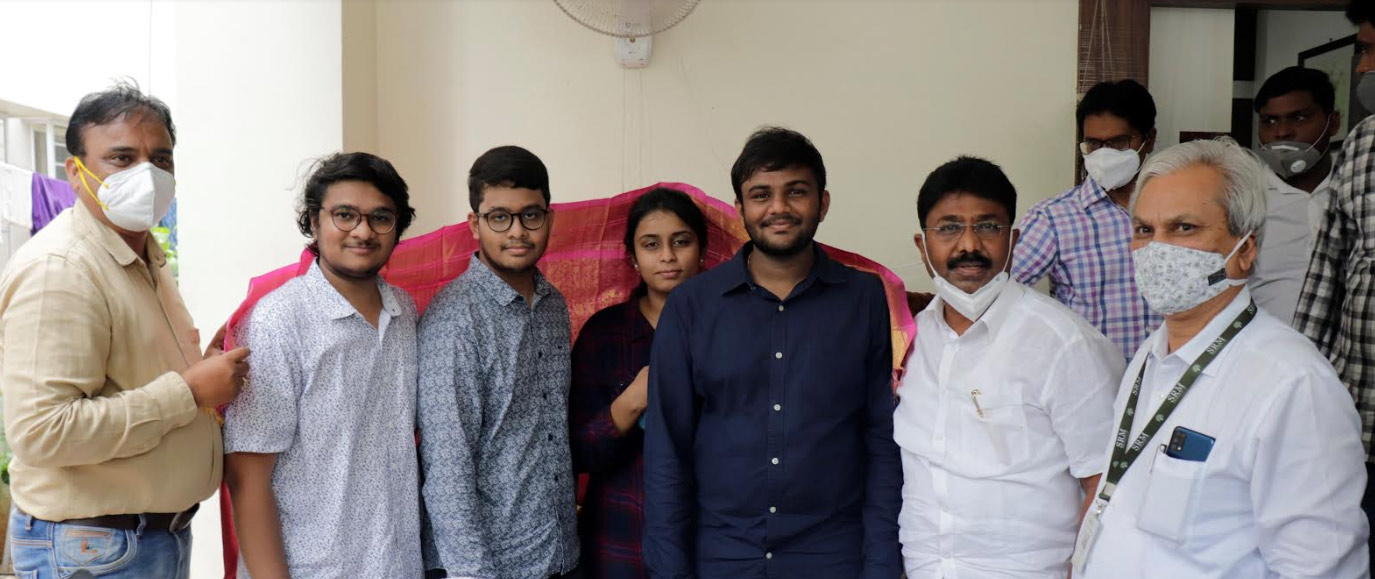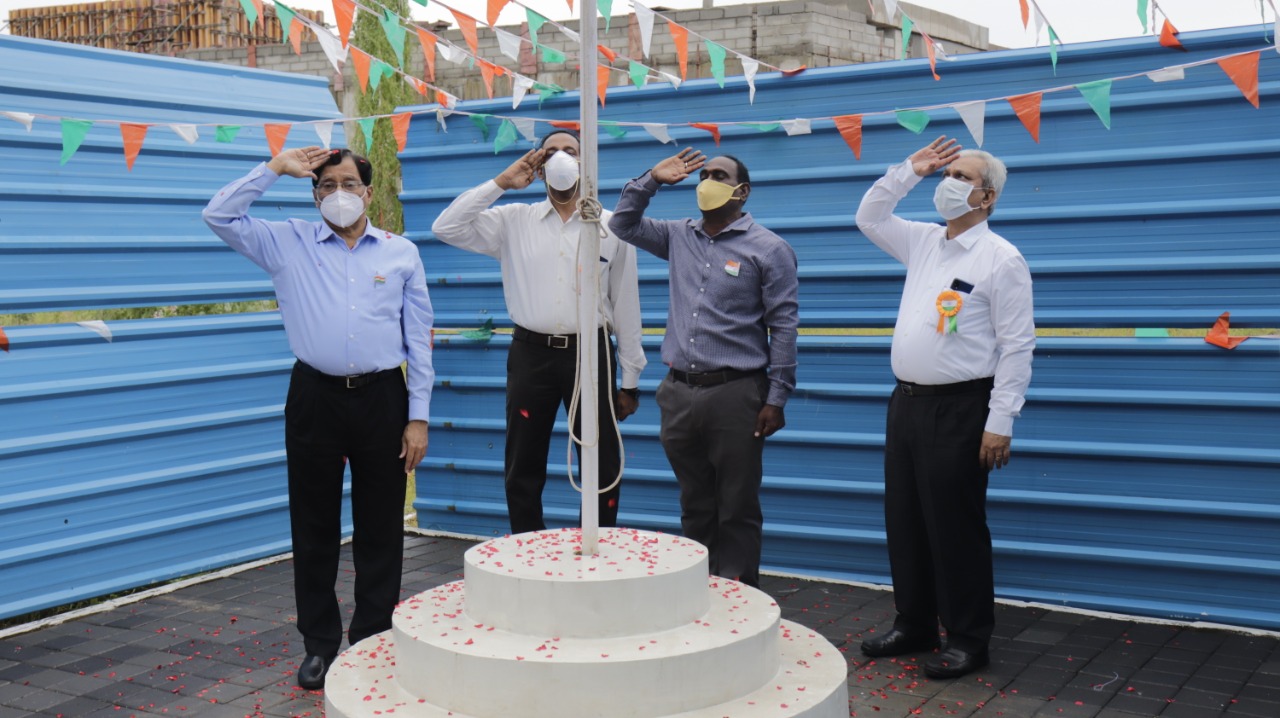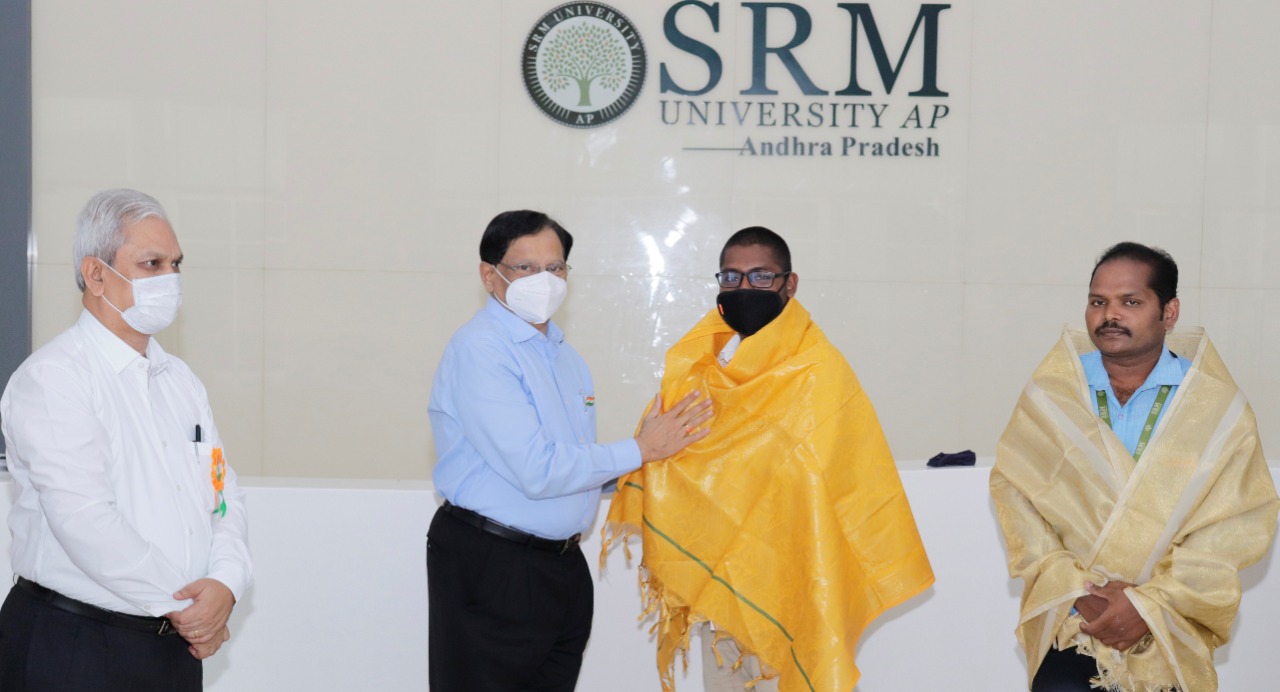SRM University-AP, Andhra Pradesh: Students Creating Records Across The World
Since its inception in 2017, SRM University-AP, Andhra Pradesh has emerged as a well-recognised University in India and overseas, supported by international collaboration with reputed institutions like MIT and UC Berkeley, among others.
Semester Abroad and Accolades
In a short span of 3 years, the students have won numerous national and international accolades. Around 23 students were sponsored for a Semester Abroad Program to UC Berkeley’s Design, Innovation and Entrepreneurship program. They built start-ups, raised funding and won multiple prestigious hackathons like Hacktech @ Caltech, LAHacks, SFHacks, Developer Week Hackathon, EthDenver etc in the USA, competing with top universities like MIT and Stanford.. Further, students have gone on to win over 50 national and international hackathons, totalling over 30 lakhs in cumulative prizes in a short span of time.
SRM AP Students were also invited and hosted at the Nobel Prize Lectures 2018 in Stockholm, Sweden by Prof. Bertil Andersson, ex-Chair of the Nobel Chemistry Committee.
Several students benefitted from Semester Abroad Programs (SAP) to University of Wisconsin – Madison, and immersion programmes in Japan and Taiwan.. A batch of 30 students went to Cape Cod, MA, USA for a bootcamp on sports and visited campuses of Harvard, MIT etc.
Student Run Labs and Research
Multiple student-run labs and clubs with thousands of members and participants, including Next Tech Lab (student-led lab which won the QS Rankings and Wharton School of Business Reimagine Education award), Ennovab (Established by students returning from UC Berkeley start-up semester) to over 30 communities like PyData, ACM Student chapters etc.
On the research front, students have authored multiple research papers published in reputed journals and worked on funded research projects, with social impact. More recently, a student created an inexpensive Face-shield in response to COVID-19 , which was presented to Ministers in the AP government.
Online Research Internship and Global Placement
Students have bagged internships at NUS and NTU, Singapore; Carnegie Mellon, UC Davis, UC San Diego and other top universities in USA and multiple research labs and universities across the world, with Global Placement boarding virtual. As many as ten students in Gaming and Data Science are on the way to placed in Japan with Internship. Many are working on their internships remotely.
Campus Recruitment Drive
Campus recruitment drive has just began for the inaugural batch 2017 or Class 2021 and 12 toppers landing top – notch job offers.
Anheuser-Busch InBev offered 6 months internship, followed by a job offer to outstanding four students. Anheuser -Busch InBev SA/NV, commonly known as AB InBev is a Belgian multinational drink and brewing company. The company has offered an internship stipend of Rs 30 thousand per month and a CTC of 12-17 LPA to the candidates who will join the company after successful completion of their internship.
Another renowned company Health Rx, A health – tech start-up from Bajaj Finserv group has offered Technical Internship with a stipend of Rs 35 thousand per month, and post that a job offer with CTC of 12 LPA to two students. Further, VIRTUSA Corporation, an American IT service provider, offered a position in the company with a CTC of 4.5 LPA to 5 outstanding students. The other company which conducted the recruitment drive at SRM AP, Sahaj Soft, selected one student and offered her a CTC of 10 LPA. Sahaj Soft is a software services and consulting firm which provides simple solutions backed by their time-tested methodology and engineering practices.
As the recruiters shortlist the best young talent who are enthusiastic, devoted to learning and brimming with fresh and creative ideas, SRM AP placement team have thoroughly trained the students both in terms of technical expertise and soft skills. The rigorous training that the students underwent since the beginning of their B. Tech course, coupled with their talent and motivation, has enabled them to succeed in recruitment drive with flying colours. SRM AP believes that this is merely the beginning of the placement season, and many more brilliant students are waiting to showcase their mettle to land up with excellent job offers in top-notch companies.
On the job front, students have completed a rigorous placement preparation program, targeting international placements and are being mentored by industry experts. This week, several students got selected with a top salary of Rs 12 LPA.
Innovations and Start ups
The IDEA center established in collaboration with UC Berkeley has supported multiple student entrepreneurs and incubated their ideas, guiding them for market release.
- Published in News
SRM AP students praised by Adimulapu Suresh, State Education Minister
“Aim for a goal that contributes to the development and welfare of the country”- advises the Minister
 The leading performers of SRM University-AP, Andhra Pradesh- Pesala Sai Tanmayi , Sri Harsha Tavidisetty Rajendra, Gude Abhin, and Talari Hrisheekesh, who received exceptional job offers in the recent campus recruitment drive, visited Adimulapu Suresh, Hon’ble Education Minister, Andhra Pradesh, along with Dr. D. Gunasekaran, Registrar. The students are placed in top-notch software and multinational companies by exhibiting their mettle and flair for technology and science. Dr. D.Gunasekaran explained to the minister the details of the jobs secured by the students in the esteemed companies and the CTC packages that they are offered.
The leading performers of SRM University-AP, Andhra Pradesh- Pesala Sai Tanmayi , Sri Harsha Tavidisetty Rajendra, Gude Abhin, and Talari Hrisheekesh, who received exceptional job offers in the recent campus recruitment drive, visited Adimulapu Suresh, Hon’ble Education Minister, Andhra Pradesh, along with Dr. D. Gunasekaran, Registrar. The students are placed in top-notch software and multinational companies by exhibiting their mettle and flair for technology and science. Dr. D.Gunasekaran explained to the minister the details of the jobs secured by the students in the esteemed companies and the CTC packages that they are offered.
The delighted students expressed their gratitude when the Minister greeted and honoured them with shawl coverings over their shoulders. The Minister advised the engineering students to aim and persevere for a goal that would contribute to the development of the country and the welfare of the society. Further, they were urged to acquire the technological skills to ensure an enviable career for themselves which in turn would enable the state to continue to take pride in their achievements.
- Published in News
2D nanomaterials for various sustainable applications
American Chemical Society publishes Dr Lakhveer Singh’s book on Advanced Applications of 2D Nanomaterials
 Dr Lakhveer Singh, Assistant Professor, Department of Environmental Science, SRM University-AP, Andhra Pradesh has edited a book on “Adapting 2D Nanomaterials for Advanced Applications” which is published in the globally renowned publishing house American Chemical Society. The book emphasizes on his collaborative work with Dr Durga Mahapatra, TERI Deakin Nanobiotechnology Center (TDNBC), TERI, India on 2D nanomaterials for various sustainable applications such as energy production and storage, biosensor, water treatment etc.
Dr Lakhveer Singh, Assistant Professor, Department of Environmental Science, SRM University-AP, Andhra Pradesh has edited a book on “Adapting 2D Nanomaterials for Advanced Applications” which is published in the globally renowned publishing house American Chemical Society. The book emphasizes on his collaborative work with Dr Durga Mahapatra, TERI Deakin Nanobiotechnology Center (TDNBC), TERI, India on 2D nanomaterials for various sustainable applications such as energy production and storage, biosensor, water treatment etc.
2D nanomaterials, or graphene equivalents, possess an exceptional array of characteristics due to their unique structure, configuration, and properties. Such materials have gained attention for countless applications due to their progression into wide varieties of crystallographic structures via abundant elemental compositions. These characteristics distinctively impart qualities to their unique chemical reaction capabilities and adjustable structural properties and therefore enable applications in energy transitions, storage, and conservation.
In his research, Dr Lakhveer has developed a variety of nanomaterials and catalysts having several applications. He mentions, “We have developed Mesoporous MnCo2O4 nanorods for electricity production, NiO, and CoO nanoparticles for biohydrogen production and Cu-ZnO nano heterojunction for degradation of chlorpyrifos pesticide.” Recently, Dr Lakhveer has developed reduced graphene oxide and silver nanoparticles on a melamine sponge skeleton by a simple coating method in collaboration with Oregon State University, USA, and Xiamen University, China. The modified sponge retained the high porosity of the sponge substrate and exhibited photothermal properties. This material provides a new idea for the recovery of heavy crude oil and provides new applications for photothermal-conversion materials.
Dr Lakhveer is currently vested in developing efficient and economical nanocatalysts that possess commercial applications in the energy and water sectors. In the next few months, he will be publishing two more books in the American Chemical Society (ACS) and Elsevier. These books will focus on novel electrodes, nano catalytic materials, and subnanometric-scale catalysts having applicability at the Nanoscale.
- Published in News, Research News
National flag hoisting by Prof V S Rao, Vice-Chancellor
 On the occasion of Independence Day, Prof. V. S. Rao, Vice-Chancellor hoisted the national flag and addressed the employees and students. During his address, Prof V. S. Rao remembered our freedom fighters and emphasized on how non-violence freedom struggle set an example for the entire world to imbibe. He further urged everyone to dedicate ourselves to the nation by contributing in advancement of science and technology, especially in the domain of Information Technology, healthcare, nutrition, and agriculture. Dr. D. Gunasekaran, Registrar, Wg Cmdr Venkataachalam Sekkappan, Director-CLM, Ms. Revathi Balakrishnan, Assistant Director-Student Affairs and others participated in the ceremony.
On the occasion of Independence Day, Prof. V. S. Rao, Vice-Chancellor hoisted the national flag and addressed the employees and students. During his address, Prof V. S. Rao remembered our freedom fighters and emphasized on how non-violence freedom struggle set an example for the entire world to imbibe. He further urged everyone to dedicate ourselves to the nation by contributing in advancement of science and technology, especially in the domain of Information Technology, healthcare, nutrition, and agriculture. Dr. D. Gunasekaran, Registrar, Wg Cmdr Venkataachalam Sekkappan, Director-CLM, Ms. Revathi Balakrishnan, Assistant Director-Student Affairs and others participated in the ceremony.
 Ph.D. students of SRM AP, D. Lenin babu and Yarramsetti Saisrinu who nobly served the needy during the pandemic were praised by Prof. V. S. Rao and Dr. D. Gunasekaran. During the lockdown, the two students distributed free essentials such as rice and condiments to the poor. They were honored with shawls and were presented the “Care Humanity” award along with mementos. Further, cultural events were organized where students participated in dance and song performances through online platform.
Ph.D. students of SRM AP, D. Lenin babu and Yarramsetti Saisrinu who nobly served the needy during the pandemic were praised by Prof. V. S. Rao and Dr. D. Gunasekaran. During the lockdown, the two students distributed free essentials such as rice and condiments to the poor. They were honored with shawls and were presented the “Care Humanity” award along with mementos. Further, cultural events were organized where students participated in dance and song performances through online platform.

